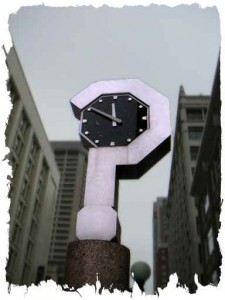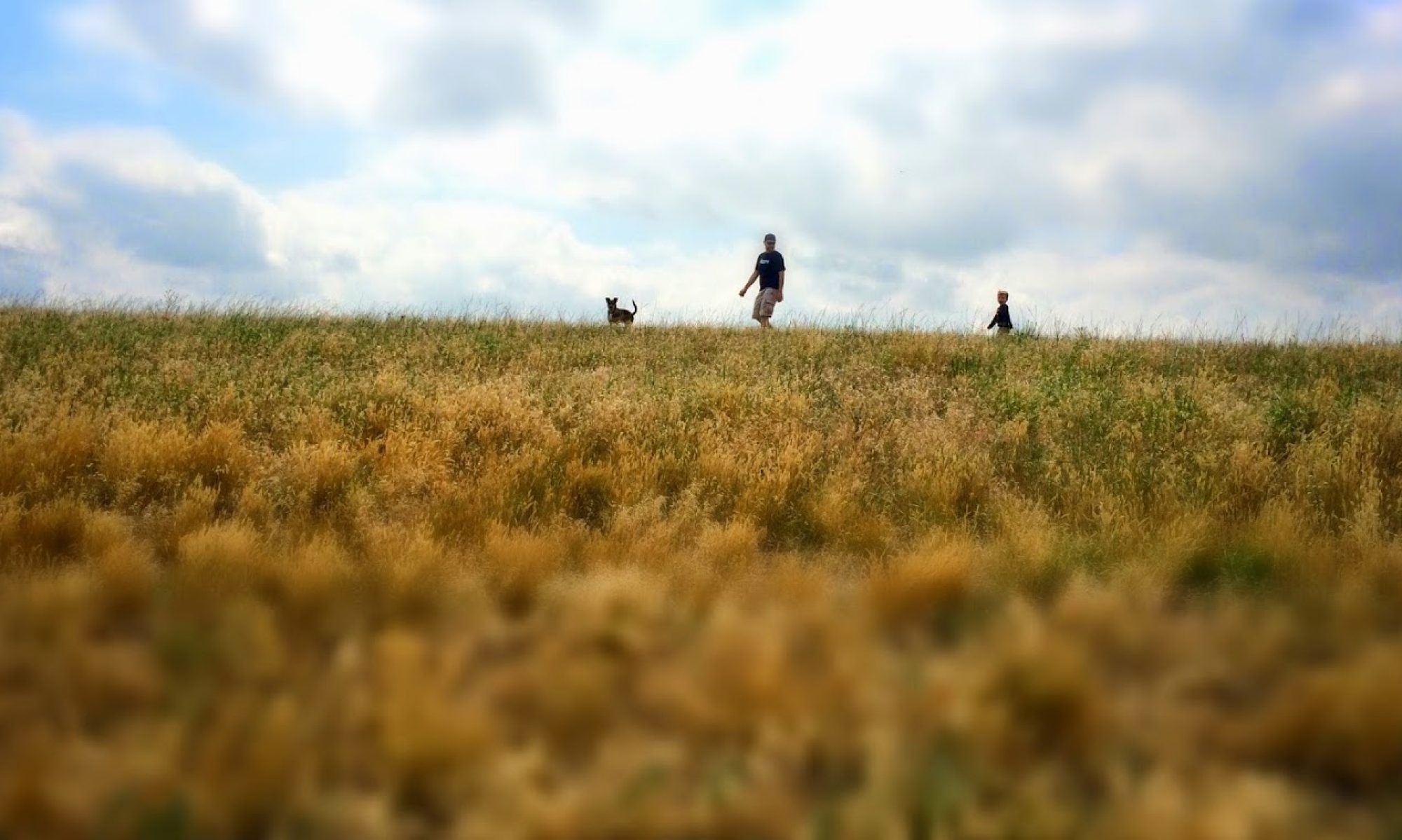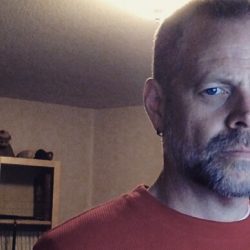 So after De asked for it, and I thought about it, and I read her post, I figured I knew what she was asking about with regard to descriptions. Then I wrote a post about that thing I thought she was asking about.
So after De asked for it, and I thought about it, and I read her post, I figured I knew what she was asking about with regard to descriptions. Then I wrote a post about that thing I thought she was asking about.
I was, of course, wrong.
But that’s okay! The post itself came out all right, and people had some good feedback and thoughts on it, so let’s call it a win and move on.
De clarified her interest in comments:
The kind of thing I’m looking more at is – when do you describe a building? When do you not describe a building? Why? When you do describe a building, how elaborate should you get? What is it that you’re trying to accomplish when you’re describing the building? What is it that you lose when you describe the building, other than the ability of the reader to fill in the details for you?
Ooh. I like that. That’s interesting. Let’s talk about it.
We join spokes together in a wheel,
but it is the center hole that makes the wagon move.We shape clay into a pot,
but it is the emptiness inside that holds whatever we want.We hammer wood for a house,
but it is the inner space that makes it livable.We work with being,
but non-being is what we use.
— Tao te Ching, verse 11
I am a big fan of not describing anything that I don’t absolutely have to. In Adrift, here’s the stuff that I’ve described:
- Deirdre’s pale skin.
- The Drift (Gallimaufry), multiple times.
- Bilabil the alien.
- Bin the bear-cat.
- The Manifold Bazaar
- Mak (the man, not the talking squirrel), and Five Finger Freight.
All of these things called for descriptions for different reasons. D’s pale skin is relevant in a larger context as a creche-child, which is historical background and plot-significant, and it will contrast her with almost every other human around. The Drift is a weird setting and some ground rules needed to be established: both what it is and what it is not, and it also starts to hint at the weird ‘paradise lost’ history of humanity in the story. Bilabil’s an alien; I needed people seeing a six-legged sloth, not (say) a big bug, and to see the parental nature of its existence, which echoes Finn. Bin’s a magical creature, and I wanted people seeing the same kind of magical creature, or at least the same specific elements. The Bazaar is a weird location, unlike any ‘space market’ I’ve read about — an inward-facing globe, thick with vegetation, and a marked contrast from the rest of the Drift — it’s a core of life inside a dead thing, and it parallels some other stuff that’s important. I also had a clear picture of Five Finger Freight and wanted that to be conveyed, because it tells us something about Mak before we meet him.
Stuff that I didn’t describe:
- Finn, the main character.
- Jon
- The Binturong, Finn’s ship.
- Any of the many dead ship’s interiors Finn crawls through.
Why did I leave those things out? I firmly believe that in any situation where the description of a thing only does one thing (tells you what something looks like), it can probably be left to the reader for the most part. Certain things can be implied in order to inform the reader’s impression, but you don’t need to spell stuff out. In fact, you’re better off not to, because what the reader comes up with out of their head will be (subjectively) better (read: more effective) than anything you write down.
- Finn is a loving father who screwed some things up in the past (like most dads). Most folks can relate to that and build a good image of Finn.
- The Binturong is a squat little indie ship. Cool, right? But everyone has an image of that cool ship that’s cooler to them than my description would be. Why not use that?
- Ditto all those dead ship’s interiors. When I say the characters are crawling along the hull of a massive battle cruiser, I’ll let the reader see that for themselves.
- I realize now that despite describing her somewhat, I never say what color Bin’s fur is, and I’m curious what colors people see when they read it.
Which isn’t to say I don’t imply things about their appearance, which is where I was going with the little quote from the Tao. I give the readers the shape and dimensions of the the jar, but they fill it up with whatever they’re bringing to the party.
There’s a funny and useful story about this. In Hidden Things (the book I’ve got representation for), there’s a dragon. The Dragon is probably one of my favorite Things in the whole book. I love it. I wrote the Dragon in a very particular way because it is a very powerful Hidden Thing and is very hard to perceive directly. This left a LOT up to the reader’s imagination, but I had no idea how much until one day when I referred to the Dragon as “he” in a conversation with someone who’d read the book.
They didn’t know who I was talking about. The Dragon was female. Clearly. Duh.
I stared. Possibly, I blinked.
Then I called a couple other readers and asked them what gender the Dragon was.
About half said male. About half said female. One guy didn’t think it really mattered, because Dragon’s transcend gender. Hippie.
Anyway, I was able to go back into that version of the story and point at specific instances where I’d referred to the Dragon as “he”. This point did not convince anyone. I eventually embraced the weirdness and removed the gender-specific pronouns.
That incident is why I believe so strongly that you really should leave as much as you can of the ‘unimportant’ stuff to the reader.
So when is it important? When you need the description for something else as well. When the description is both a description and foreshadowing, or when it’s a clue, or when it matters to the larger plot. When (again, to reference Chuck’s post) it’s doing more than one thing.
Example:
In the Adrift episode I am going to record tonight posted Thursday, Finn makes a specific point of narrator-commenting on the politeness of one of the people he meets; how unusual it is — like crawling through a rotten old space hulk and emerging in a cathedral. I wasted time making a note of that and making that analogy because (spoiler!) much later in the story, the flipside of that unlikely analogy actually happens.
Back to De’s comment, broken out:
1. When do you describe a [thing]?
When you need it to exist in the reader’s mind in a specific way, or including specific elements, because of some bigger thing going on in the story. (If you’re feeling decadent, you can also include ‘when you have this awesome imagery that you really want to include’, but be aware that you really should make that awesome thing more broadly relevant in order to justify keeping it around during revisions.)
2. When do you not describe a [thing]?
When #1 is not true.
3. When you do describe a [thing], how elaborate should you get?
You know what I’m going to say. Initially, three key facts. No one will remember more than three anyway, so they’ll cherrypick from a longer list, and might not focus on the Important Thing. You can introduce additional facts later. (Note: I totally break this rule in Adrift — Bilabil has fur, six legs, asymmetrical rows of nipples, a marsupial pouch, and big teeth. We hang out out with it for a long time, though, so maybe it’s okay.)
4. What is it that you’re trying to accomplish when you’re describing the [thing]?
That varies, but it’s never ‘describe the thing’, or at least it’s never only ‘describe the thing’.
5. What is it that you lose when you describe the [thing], other than the ability of the reader to fill in the details for you?
I’m not sure that you lose anything else, but I would shift the wording a bit: you lose the ability of the reader to fill in the details for themselves. The most awesome [thing] in my head that I then describe will not be as awesome as a similar awesome [thing] you think up in your own head…
Unless I can add depth to the [thing] by tying it into the rest of the story in some important way — that extra dimension hidden within my description is the thing I can do as the writer that the reader cannot, which makes it possible for me to cheat come up with cooler things than the reader would have thought of.
Sometimes.


Point of clarification: this is phrased in such a way that it will seem as though I’m speaking directly to De.
Worse, that I’m trying to teach at her.
I would never presume.
Her questions gave me some much-needed direction on a topic that I’m kind of annoyingly zen-don’t-think-about-it, without which I would simply have meandered around, not accomplishing much with my ramblings.
Put another way: she is teaching me.
My favorite thing about description is how a targeted absence of description can make something stronger — that might be a blog post one of these days, how less is more when it comes to writing.
The reader will do work on behalf of the story — you never want them to do too much, but you want them to fill in enough blanks that they have ownership over it, mentally, and are as much a part of the fabric of the tale as you are.
As you note:
“I’m not sure that you lose anything else, but I would shift the wording a bit: you lose the ability of the reader to fill in the details for themselves. The most awesome [thing] in my head that I then describe will not be as awesome as a similar awesome [thing] you think up in your own head…”
Super true.
— c.
I would add a literal answer to the question “When should you describe a thing?” –Early in the story, before the reader has established too strongly their own idea of what it is. That is, if you’re going to describe it. (And thank the lord, somebody else who thinks you don’t have to describe every damn thing that shows up in the tale.)
Dear Doyce,
Word.
Warmest Regards,
Will.
Okay, that all makes sense and answers the questions. For bonus points, what COULD you be doing with description – that is, #4?
Oddly, the desc in the chocolate story (i.e., current project) is going well. The POV is a 3rd-person so tight it’s really first person, so all the description is flavored by the main character’s thoughts, but not in a direct-thought kind of way. Again, you probably already know about that, but for me, is big deal.
It’s far-future SF; I find myself describing the world a lot. The world might be a character; I’ve heard of people saying stuff like that, but I’ve never done it. Most of the things I describe are things that piss the main character off. “Here’s this, which is stupid.” Or “This other character was dressed like this, and looked no better than she should be.”
How do you explain that, though? What do you call it, the pathetic fallacy?
.-= De´s last blog ..Okay, this site is pretty much dead… =-.
(De, make sure you’re website info in the website field is the new site.)
I’m TOTALLY CRIBBING off Chuck’s post when I answer your question. Other stuff you could be doing with number 4: Add some Action, Foreshadow some Event, Leave a Clue or Red Herring, Character Moment, establish Mood, and maybe even play with the Theme a little (if you’re not me – I never know what that is).
Like you, I do a lot more describing in Adrift of the setting and place and stuff within that setting than I would in an otherwise ‘normal’ setting. I think that’s just par for the course — when stuff is that different, you need to explain it to people, because the possible deltas between what you see and what they’ll see are too great, otherwise.
I think that means a couple things:
1. If we’re doing more description of the setting, but still trying to make each new description do more than one thing (Chuck’s “no unitaskers”), the result will be that the setting will be strongly informed by and tied to the story we’re trying to tell, moreso than normal.
2. I think that’s okay. Why put a story in a weird setting unless the setting is going to matter substantively? I think that makes cool things happen.
Seems to be the case in Adrift, anyway. I’m finding out a lot more about the setting than I’d expected, and what I thought was a very ‘internal’ story is constantly reaching out to the world around it and pulling in elements of history and government and crime and religion. It’s… I don’t know what it is, but I like it.
I’d say just let it happen — If I want to read the story, I’ll want to know more about that chocolate future.
.-= Doyce´s last blog ..Adrift, Episode 10 (podcast) =-.
Crappy-i-ola. Okay, website looks good now.
It looks like, between you and Chuck, that the basics are covered. However, basics are often 1) too simple to be easily understood unless you already understand the basics and 2) kind of boring, really.
For a (future) request, may I have (to remedy #1) examples and (to remedy #2) where would you go, to push the far envelope, or beyond that?
Because, for example, unless I already know what it means that I need a thing to exist in a reader’s mind in a specific way (your ex 1), or including specific elements, it means bupkiss.
Frex, if main character hits guy across the back of the head with a spanner, how will I know if the word “spanner” is enough?
With what I know now about description, I know that it isn’t enough, because there are some elements of the spanner the character would react to, because of who she is: she would check the spanner to make sure she doesn’t need to clean it, because she always cleans tools after she uses them. I would have to describe whether the tool was clean or dirty.
I also know that I have to mention clues, just like I have to introduce the love interest before she can fall in love with him. BUT that leaves me with a big red arrow, pointing toward my clues (because what ELSE has been realized, in the scene?).
So now I have three reasons to describe things:
1) Stage directions.
2) Character reacts to it (developing character).
3) Item required later in plot (developing plot).
…
And then what?
Re: three key facts = ah, the magic of three. Four is stressing it. Five is the sign of an unhinged mind.
.-= De´s last blog ..New project: Chocolate Story =-.
I think your “and then what” is creating Mood and establishing or reinforcing Theme. Stuff like that. pretty advanced kung-fu, in my opinion, which I’m not always comfortable futzing around with, honestly.
Mood I will, more than Theme, I suppose.
Just thinking out loud.
I’ll pry do an post of examples in the future, but not right now. I need to let it percolate a bit, and there’s a rant I need to get off my chest first. New post!
.-= Doyce´s last blog ..Adrift, Episode 10 (podcast) =-.
Thank you so much for this insight. I have a tendency to want to not leave any loose ends. You are right trust the reader. I come from the era before music videos and we used to bemoan the fact that MTV has changed the way we hear music. Now we get the image of the singer, not our imaginations as we listen to the music. I suppose description is similar – let the reader be invested in imagining parts of the book.
Great post! Found your site via a tweet from InkyElbows. Will def be following so I can learn more. Thanks.
Interesting read. I don’t know that there is a formula for what to describe – seems like a stylistic choice. But, I often find myself wondering if I have the balance figured out for my stories.
.-= Clair´s last blog ..Memoirs of a Zelig =-.
I definitely don’t think there’s a formula. At best, I have vague guidelines. Super vague. Most vaguest.